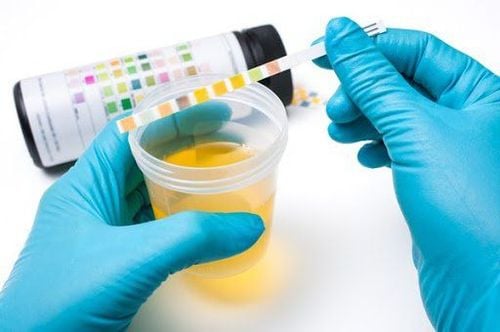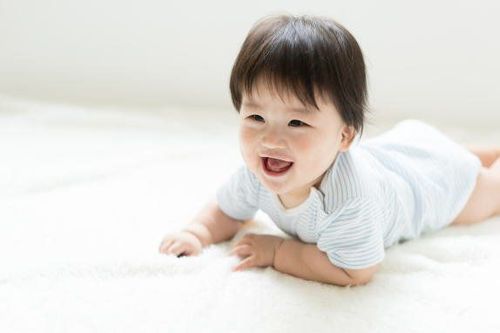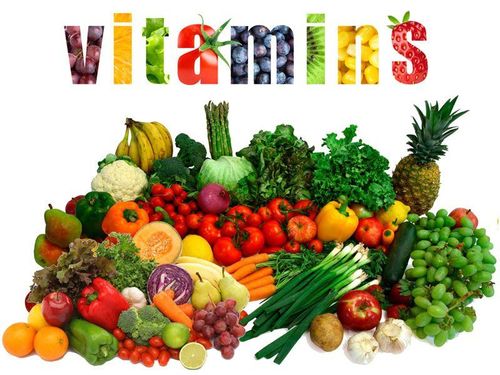This is an automatically translated article.
The article is professionally consulted by Master, Doctor Phan Ngoc Hai - Department of Pediatrics - Neonatology - Vinmec Danang International General Hospital.Child development milestones are important criteria for assessing cognitive, language, physical, social, and emotional development in children. Parents need to keep a close eye on their baby's development so that they don't miss any milestones.
1. Development of 2 months baby
Social and emotional: Begins to smile at people; Remain calm for a short time (sometimes babies put their hands to their mouths and suck their thumbs); Try to see your parents. Language/Communication: Baby can make gurgling sounds; Turn your head towards the sound. Cognitive (learning, thinking, problem solving):Faces show attention; Begins to follow things with his eyes and be able to recognize people far away; Can get bored (grimaces, fussiness) if things don't change. Physical development: Being able to hold his head up and do push-ups when lying on his stomach; The baby's gait appears to be smoother with the coordination of the arms and legs.
Trắc nghiệm: Sự phát triển tinh thần, vận động của bé thế nào là đúng chuẩn?
Khi nào bé biết nói, biết hóng chuyện hay biết cầm cốc là "đúng chuẩn"? Điểm xem bạn biết được bao nhiêu mốc phát triển tinh thần, vận động "đúng chuẩn" của bé nhé!The following content is prepared under supervision of Thạc sĩ, Bác sĩ y khoa, Ma Văn Thấm , Nhi , Phòng khám Đa khoa Quốc tế Vinmec Dương Đông(Phú Quốc)
2. 4 months is an important development milestone for children
Social and emotional: Babies can smile naturally, especially when smiling at people; Likes to play with people and can cry when not being played; Imitate some other people's actions and facial expressions, like smiling or frowning. Language/Communication: Begins babbling with sounds and sounds your baby hears; Cry in different ways to show that you are hungry, in pain, or tired.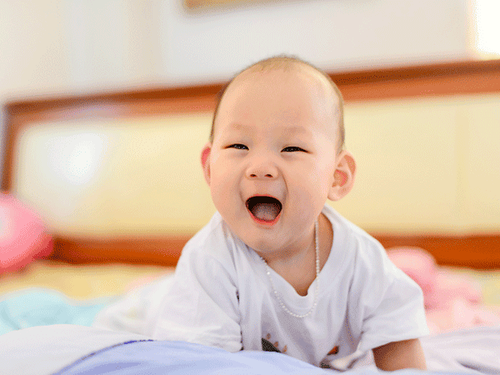
3. The change when the baby is 6 months old
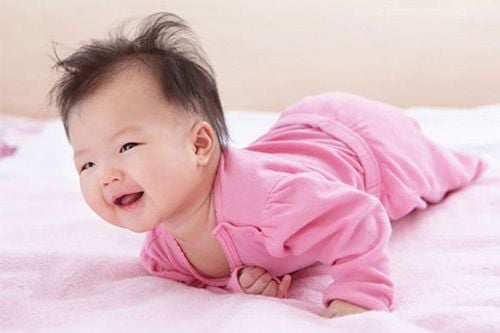
4. 9-month baby development
Social and emotional: Feeling afraid of strangers; Often clings to parents, adults familiar with the child; Have a favorite toy. Language/Communication: Understanding negative sentences; Make different sounds to call your parents, like “mama” and “baba”; Imitate other people's voices and gestures; You can use your finger to point at something. Perception (learning, thinking, problem solving): Knowing something is falling and tracking; Know how to look for things that parents deliberately hide from their children; Can play a simple game of hide and seek; Put objects in the mouth; Move objects more smoothly from one hand to the other; Able to grasp with thumb and index finger. Physical development: Stand and maintain posture; Able to sit in sitting positions (chairs, strollers); Sit firmly without support; Pull back to get up; Can crawl skillfully.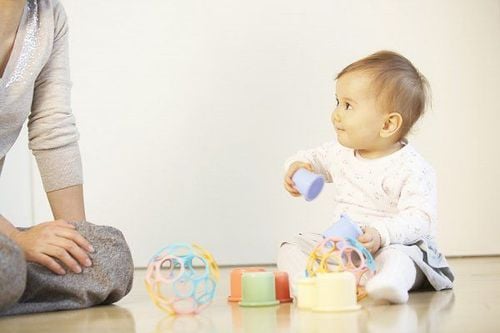
5. Changes when the child is 1 year old
Social and emotional: Shy and nervous when meeting strangers; Cry when mom or dad leaves; Show interest in certain people or objects; Show fear in certain situations; Give you a book when your baby wants to hear a story; Repeating sounds or actions to get attention; Extend an arm or a leg for a parent to help get dressed; Play games like hide and seek or clapping. Language/Communication: Making simple sounds in response to others; Use simple gestures, like shaking your head or waving goodbye; Make some sounds with a change in tone (sounds close to speech); Say “mama” and “baba” more fluently and exclamations like “uh” “oh”; Try to imitate what people around you are saying. Perception (learning, thinking, problem solving): Explore things in different ways, like shaking, banging, throwing; Easily find hidden objects; Look at pictures or objects as they are named; Imitate the gestures of others; Start using things more precisely, for example: drink from a glass of water, brush your hair with a brush; Smash two objects together; Know how to put things in the container and take it out of the box; Poke, point with index finger; Can recognize some simple commands, like “Pick up the toy”. Physical development: Getting to a sitting position without help from others; Use your hands to hold onto things to walk and get up; Can walk a few steps on his own; Can stand alone.6. What can an 18-month-old baby do?
Social and emotional: Likes to give toys to others when they want to play with them; May express anger; Feeling afraid of strangers; Show affection to familiar people; Play simple simulation games, such as feeding dolls; Can cling to parents or caregivers when situations the child has not encountered; Use your hand to show others something interesting; Discover everything when you are near your parents. Language/Communication: Speaks a few single words; You can talk while shaking your head; Use your hands only when you want to do or get something. Cognitive (learning, thinking, problem solving): Knowing what simple objects are for, eg phones, brushes, spoons; Using your hands just to get other people's attention; Show interest in a doll or stuffed animal by pretending to feed them; Point to a body part and show curiosity; Bad hand-writing; Able to follow simple commands without any other gestures, for example can sit when you give the command "sit down". Physical development: Takes more steps on your own, can even run; Pick up toys on the go; Can undress himself; Drink with a glass of water; Eat with a spoon.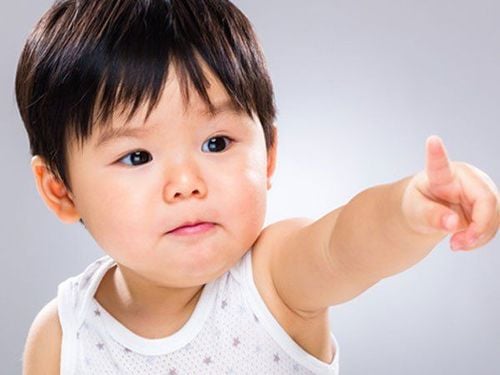
7. Development of 2-year-olds
Social and emotional: Imitating others, especially adults and older children; Feeling happy and excited about being with other children; Show more independence; Sometimes challenging behavior (doing things that parents won't let); Spend time playing mostly with other children, but start playing in a group, such as a game of catch. Language/Communication: Point to the correct objects or images when they are named; Know the names of familiar people and body parts; Speaks in simple sentences of 2 to 4 words; Follow these simple instructions; Repeating words heard in a conversation; Point to things that appear in the book. Perception (learning, thinking, problem solving): Finding things that are well hidden behind 2 to 3 layers; Begins to perceive, select, sort by shape and color; Complete familiar sentences and rhymes in the book; Know how to simulate some simple objects and assume them; Stack 4 blocks or more into a tall tower; Start using one hand more than the other; Make two-step requests, for example, “Pick up your shoes and put them in the closet”; Name things that appear in books or pictures, such as cats, birds, or dogs. Physical development: Know how to tiptoe; Know how to play football; Run more fluently; Climb up and down furniture without help; Know handrails to go up and down stairs; Capable of throwing the ball; Draw or imitate drawing lines and circles.8. Changes when children reach 3 years old
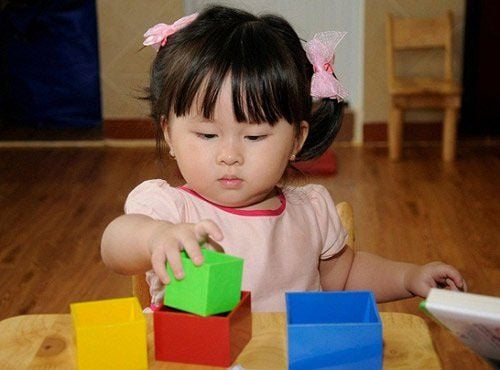
9. What can a 4-year-old baby do?
Social and emotional: Likes to do new things; Play the game of pretending to be “father” or “mother”; Get more and more creative with simulation games; Wants to play with other children rather than alone; Have cooperation with other children; Sometimes confuse the real thing with the simulated object; Talk about what your baby likes and cares about.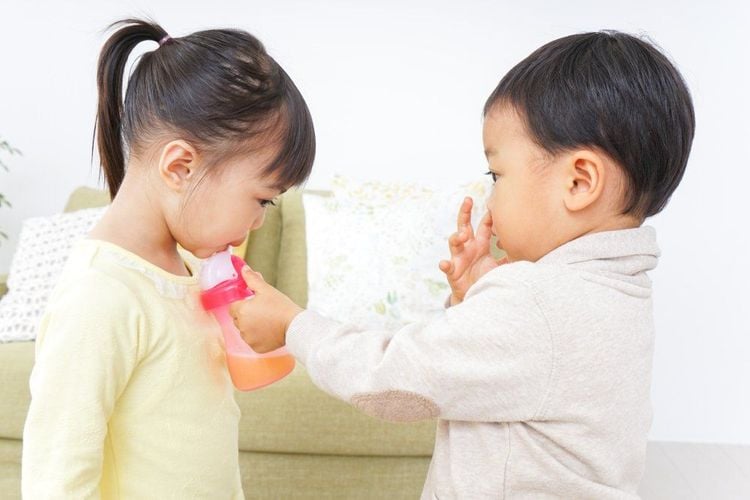
10. Development of a 5-year-old child
Social and emotional: Wants to please friends; Want to be like friends; Tends to follow the rules; Likes to sing, dance and act; Beginning of gender awareness; Distinguish between real and simulated objects; Shows greater independence (for example, being able to visit a next-door neighbor on her own, but still requires adult supervision); Sometimes very demanding and sometimes very cooperative. Language/Communication: Speak more clearly; Tell a simple story using full sentences; Use the future tense, for example “grandma will be here”; Indicate name and address. Cognitive (learning, thinking, problem solving): Knows how to count from 10 or more; Can draw a person with at least 6 body parts; Can write some letters or numbers; Be able to imitate drawing a triangle or other geometric shapes; Know about things that are used every day, like money and food. Physical development: Stand on one leg for 10 seconds or so; Know how to hopscotch; Can do a somersault; Using a combination of fork and spoon, sometimes even a knife on the table; You can go to the bathroom on your own. Know how to play swing and climb skillfully. The American Academy of Pediatrics recommends that children be screened and assessed for developmental milestones using standardized tools at 9, 18, and 24 or 30 months of age. and at 18 and 24 months of age for children with autism or whenever parents feel concerned about their child's development.Trắc nghiệm: Nhận biết sớm dấu hiệu chậm phát triển thể chất và trí tuệ ở trẻ
Nếu 6 tuổi không biết đếm số, 7 tuổi vẫn chưa phân biệt được giữa thực tế và tưởng tượng thì có thể bé chậm phát triển thể chất và trí tuệ hơn so với bạn bè cùng lứa. Bạn đã nhận biết được các dấu hiệu bất thường sớm này chưa? Cùng làm nhanh bài trắc nghiệm sau để trang bị thêm kiến thức cho mình nhé!
The following content is prepared under supervision of Thạc sĩ, Bác sĩ y khoa, Ma Văn Thấm , Nhi , Phòng khám Đa khoa Quốc tế Vinmec Dương Đông(Phú Quốc)
Please regularly visit Vinmec.com website and update useful information to take care of your baby and family.
Reference source: cdc.gov








